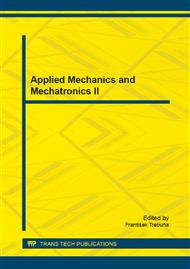p.240
p.248
p.255
p.261
p.270
p.276
p.282
p.288
p.294
Design of Wheeled Robot for Rough Terrain
Abstract:
The paper deals with the design of the simulation model of a wheel chassis with improved ability to cross a rugged terrain, which is to move across rugged terrain. One of the first steps taken was to propose the solution and its further improvement. In order to complete final simulation model, we carried out several simulations and resistance analysis confirming the advantage of the selected structure and mobility of the chassis.
Info:
Periodical:
Pages:
270-275
Citation:
Online since:
November 2015
Authors:
Keywords:
Price:
Сopyright:
© 2015 Trans Tech Publications Ltd. All Rights Reserved
Share:
Citation:


